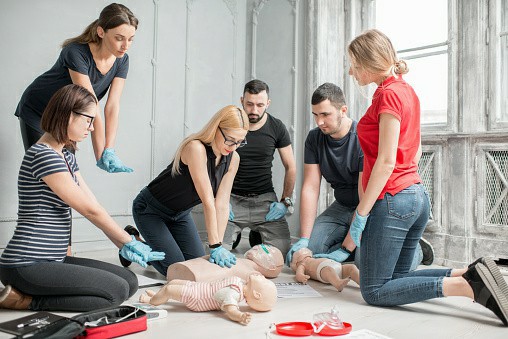Elevate Workplace Safety: The Crucial Role of First Aid & CPR Training
In today's fast-paced work environments, ensuring the safety and well-being of employees has become more critical than ever. One of the most effective ways to enhance workplace safety is through comprehensive First Aid and CPR training. This essential training not only prepares employees to handle emergencies effectively but also fosters a culture of safety, compliance, and preparedness.
The Importance of First Aid and CPR Training for Workplace Safety
Every workplace faces its share of emergencies, whether it’s a minor injury or a life-threatening situation. By integrating First Aid courses into your employee training programs, you are taking a significant step towards workplace health and safety. Here are some critical reasons why First Aid and CPR training is paramount for every organization:
- Immediate Response to Emergencies: Trained employees can provide immediate assistance while waiting for professional medical help, which can be crucial in saving lives.
- Reduced Severity of Injuries: Quick, effective First Aid can reduce the severity of injuries, minimizing recovery time and improving employee morale.
- Legal Compliance: Many workplaces are legally required to have trained employees on-site. Compliance with health and safety regulations protects both employees and employers.
Key Emergency Response Skills Every Workplace Needs
To truly prepare your employees, equip them with essential emergency response skills that can make a difference:
- Recognizing Emergencies: Employees should be trained to identify when a situation escalates to an emergency.
- CPR Techniques: Basic CPR techniques can be lifesaving. Employees trained in CPR can respond effectively during cardiac arrests.
- Managing Choking Incidents: Learning how to help someone who is choking can save a life. The Heimlich maneuver is a crucial skill.
- Control of Bleeding: Training in techniques to manage bleeding can prevent hypovolemic shock, which is potentially fatal.
Understanding CPR Techniques: Life-Saving Knowledge for Employees
CPR (Cardiopulmonary Resuscitation) is one of the most critical skills a person can possess. Understanding the steps involved in administering CPR can literally mean the difference between life and death. Key components include:
- Assessing the Situation: Before starting CPR, ensure the area is safe and assess the victim's responsiveness.
- Chest Compressions: Proper techniques for delivering effective chest compressions.
- Rescue Breaths: Understanding when and how to provide rescue breaths.
First Aid Training and Compliance with Workplace Regulations
Beyond the immediate benefits of saving lives, having a workforce trained in First Aid and CPR certification is essential for legal compliance. Many jurisdictions require specific workplace First Aid requirements based on the size and nature of the business. Notably:
- Employers must ensure that there are enough trained personnel on-site based on the number of employees.
- Regular refresher courses should be mandated to keep skills current.
How First Aid Certification Benefits Employees and Employers
The advantages of First Aid certification extend to both employees and employers:
- Enhanced Employee Confidence: Employees feel more secure and capable when trained in First Aid, leading to a more empowered workforce.
- Improved Company Image: An organization seen as prioritizing safety promotes employee loyalty and attracts potential hires.
- Potential Insurance Benefits: Some insurance companies offer discounts or bonuses to companies with trained staff in First Aid.
Emergency Medical Procedures: Immediate Response Steps
Preparing employees with practical emergency medical response procedures ensures they know how to act. Key steps include:
- Evaluating the scene and ensuring it is safe.
- Calling emergency services when necessary.
- Administering First Aid as necessary until professional help arrives.
Selecting the Right First Aid Course: Online Versus In-Person Options
Whether you opt for an online First Aid course or an in-person Emergency First Aid Training Course, it's important to choose a provider that meets your needs. Consider factors such as:
- Course content relevance.
- Accreditation and certification.
- Flexibility in scheduling and learning environment.
Conclusion and Call to Action
Enhancing workplace safety through First Aid and CPR training is not just a legal obligation but a moral responsibility. Invest in your employees’ safety and well-being today. Enroll in a First Aid Course to empower your workforce with essential skills that can save lives!
For more information, contact us at [email protected].



 349,500 Offered Certificates
349,500 Offered Certificates
 24/7 Online Training
24/7 Online Training
 Money Back Guarantee
Money Back Guarantee
 Fully Accredited Courses
Fully Accredited Courses
